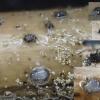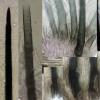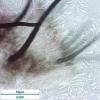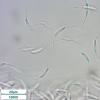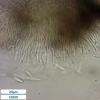
14-11-2025 16:26
 Marian Jagers
Marian Jagers
Hello everyone, On dead wood of Cytisus scoparius

14-11-2025 18:31
 Lothar Krieglsteiner
Lothar Krieglsteiner
Hello,can somebody provide me with a file of:Rothe

12-11-2025 09:25
 Viktorie Halasu
Viktorie Halasu
Hello, I need help with a pale terrestric Pseudom

11-11-2025 20:16
Bohan JiaHi, lastly I have found these tiny yellow decayin

09-11-2025 13:20
Hello.A tiny ascomycete, appearing as erupting gra

08-11-2025 00:29
 Francois Guay
Francois Guay
I found this species in Quebec, Canada, on herbace
The sporodochia are rounded to oblong, to 0,4 × 0,7 mm, pulvinate, setose. In wet condition the slimy mass of conidia is light grey, drying to darker gray and finally dark brown. It has two kinds of setae, the acuminate type is up to at least 300 µm long, very dark, opaque, with at least some septa below. The other type with a rounded apex is up to 170 µm, smokey brown with a lighter apex, no septa. Both types have a bi- or multifurcate base. The excipulum has light brown cylindrical hairs. The conidia are 10.3 - 12.5 × 2.3 - 2.6 µm (excl. appendages), guttulate, with a 5-10 µm long filiform appendage at each end. Conidiogenous cells in the last photo.
My best guess is something in Koorchaloma but i can't find a matching species. Are there better suggestions?
